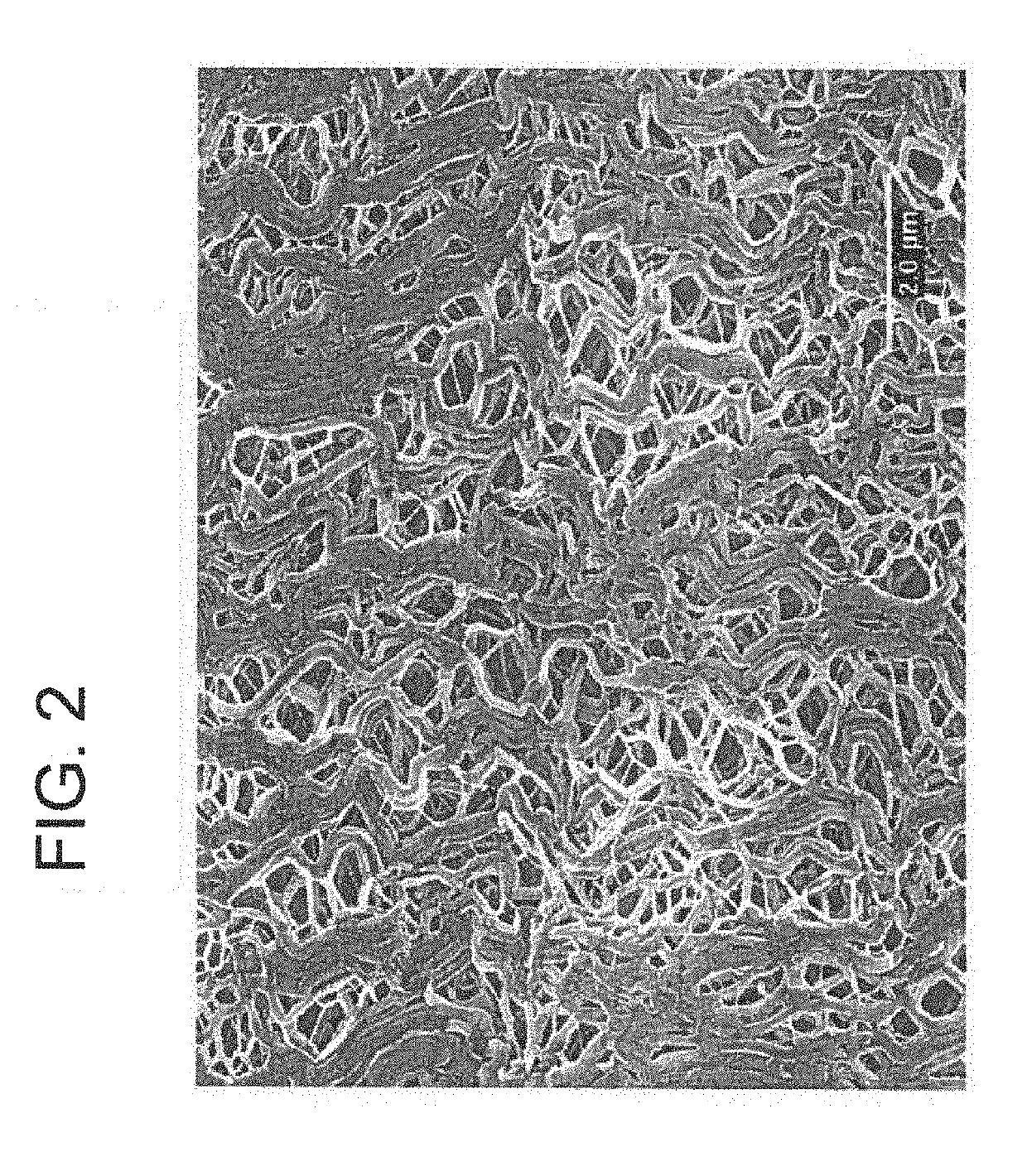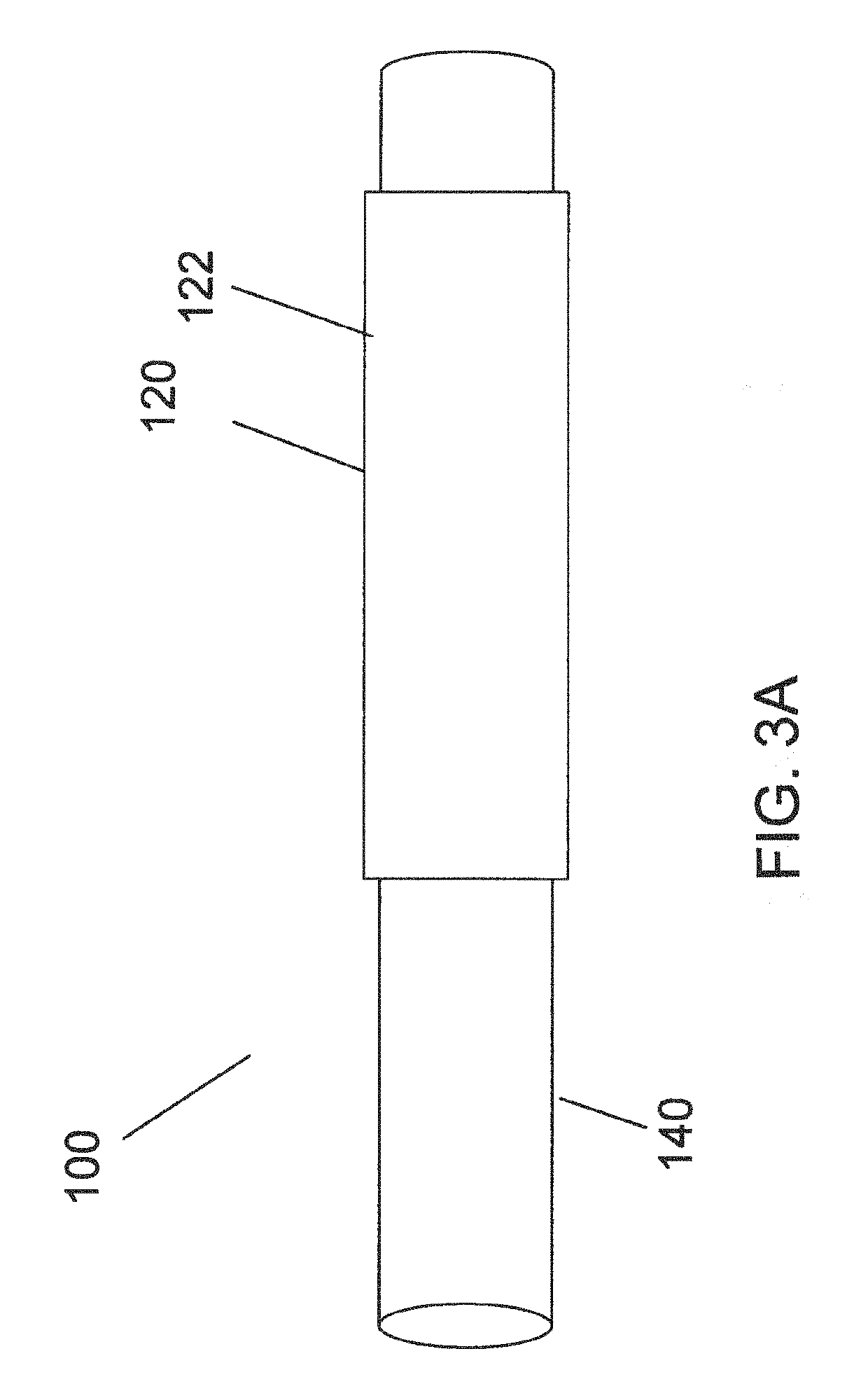Medical balloon devices and methods
a balloon and medical technology, applied in the field of balloon devices, can solve the problems of less than optimal, extra processing steps, and limited longitudinal distension of the balloon wall, and achieve the effect of less material bulk and smaller diameter
- Summary
- Abstract
- Description
- Claims
- Application Information
AI Technical Summary
Benefits of technology
Problems solved by technology
Method used
Image
Examples
example 1
[0082]An elastomeric composite material was made in the following manner.
[0083]Precursor Membrane
[0084]A biaxially expanded ePTFE membrane that had not been amorphously locked and had the following properties was obtained: thickness was approximately 0.001 mm, density was approximately 0.964 g / cc, matrix tensile strength in the strongest direction was approximately 451 MPa, matrix tensile strength in the direction orthogonal to the strongest direction was approximately 320 MPa, elongation at maximum load in the strongest direction was approximately 92%, and elongation at maximum load in the direction orthogonal to the strongest direction was approximately 142%. Upon tensioning by hand, the membrane did not noticeably retract upon the release of the tension.
[0085]Retracted Membrane
[0086]A roll of precursor membrane where the length direction corresponded with the weakest direction of the membrane was restrained in the clamps of a heated, uniaxial tenter frame and fed into the heated ...
example 2
[0092]A balloon cover was constructed in the following manner. An ePTFE-fluoropolymer elastomeric composite material as described in detail above was obtained. A mandrel sized to delivery diameter, approximately 4.3 mm is obtained. It was noted that the length direction of the composite material was the direction that possessed the elastomeric properties.
[0093]The composite material was cut to 100 mm width, measuring in the machine direction. The composite material was cut to 250 mm length, measuring in the transverse direction. The 250 mm length was then cut into two, 125 mm lengths, measuring in the transverse direction.
[0094]The composite material was aligned so that the 4.3 mm mandrel was parallel with the machine direction of the material. The film was then circumferentially wrapped about the mandrel with the side of the membrane opposing the imbibed elastomer oriented toward the mandrel. The second 125 mm length was then circumferentially wrapped about the mandrel with the sid...
example 3
[0097]A balloon cover was constructed in the following manner. An ePTFE-fluoropolymer elastomeric composite material was obtained. This composite utilized an expanded ePTFE membrane—made generally in accordance with U.S. Pat. No. 5,476,589 to Bacino which is hereby incorporated by reference in its entirety—had the following properties: thickness was approximately 6.3 μm, mass per area was approximately 3 g / m2, matrix tensile strength in the strongest direction was approximately 917 mPa, matrix tensile strength in the direction orthogonal to the strongest direction was approximately 17.2 mPa. The membrane was coated similarly to the composite of Example 1. A mandrel sized to delivery diameter, approximately 4.3 mm is obtained.
[0098]The composite material was cut to 100 mm width, measuring in the machine direction. It is noted that this width direction is the strongest direction. The composite material was cut to 250 mm length, measuring in the transverse direction. The 250 mm length ...
PUM
| Property | Measurement | Unit |
|---|---|---|
| width | aaaaa | aaaaa |
| stiffness | aaaaa | aaaaa |
| width | aaaaa | aaaaa |
Abstract
Description
Claims
Application Information
 Login to View More
Login to View More - R&D
- Intellectual Property
- Life Sciences
- Materials
- Tech Scout
- Unparalleled Data Quality
- Higher Quality Content
- 60% Fewer Hallucinations
Browse by: Latest US Patents, China's latest patents, Technical Efficacy Thesaurus, Application Domain, Technology Topic, Popular Technical Reports.
© 2025 PatSnap. All rights reserved.Legal|Privacy policy|Modern Slavery Act Transparency Statement|Sitemap|About US| Contact US: help@patsnap.com



